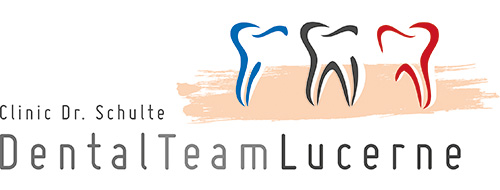Preventive Treatment: Prophylaxis & Dental Hygiene
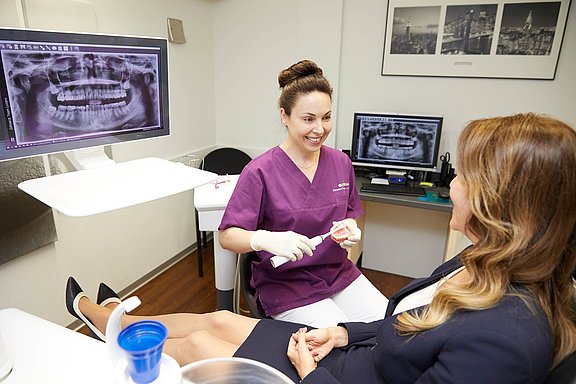
Dental hygiene and prevention with regular professional dental cleanings and exams is a guarantee for the optimal maintenance of dental and periodontal health.
This makes it possible for early detection of cavities and periodontal problems, before permanent damage develops.
Our skilled dental hygienists and prophylaxis assistants will instruct you in proper oral hygiene techniques that work best for you.
Read or print a complete article on one page: Preventive Treatment: Prophylaxis & Dental Hygiene
If you are interested in specific topics or if you want to read the chapter in sections, please choose from the following bullet points:
What We Offer in Preventive Treatment:
- Gentle care, carried out by highly qualified professionals
- Painless removal of tartar and stain, polishing of tooth surfaces
- Conscious sedation with nitrous or sedatives available
- Nutrition counselling for dental health
- Periodontal therapy: root planning and deep cleaning
- Laser treatment of periodontal pockets
- Regular periodontal charting
- Effective and long lasting whitening (Bleaching) of your teeth
- Desensitizing of hypersensitive teeth with laser
- Special care for implant patients
Advice for Proper Oral Hygiene
The most effective way to prevent cavities (tooth decay) and periodontal disease is regular and thorough oral hygiene. The goal is complete removal of all food particles and bacterial plaques.
Tools for oral hygiene generally include a proper toothbrush, fluoride toothpaste, floss and/or interdental brushes and stimulators.
Choosing a Proper Toothbrush
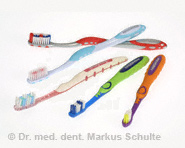
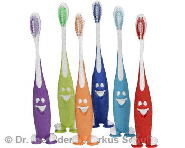
Toothbrushes for adults (left) and children (right)
The handle of the brush should not be too long and feel comfortable, allowing a firm grip.
Particularly for children, compact forms of handles with larger grips and smaller brush heads are available.

to the size of the mouth – in this hippo, it also
does a hand brush.
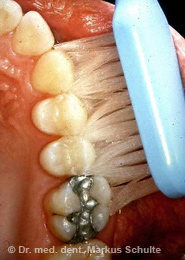
The brush head should be small and rounded on all sides to allow sufficient movement in the mouth. The bristles should be made from synthetic material and be of soft stiffness. Hard bristle brushes can cause abrasion to the enamel and gum tissue resulting in gum recession and sensitive teeth. Bristles from natural origin have been found to hold and colonize bacteria and are not recommended.
After brushing, clean the brush under running water and place it in an area it can dry in order to keep bacterial colonisation to a minimum. The toothbrush has to be changed at least every three month, or when the bristles begin to fray, whichever occurs first.
Electric and Sonic Toothbrushes
Electric toothbrushes
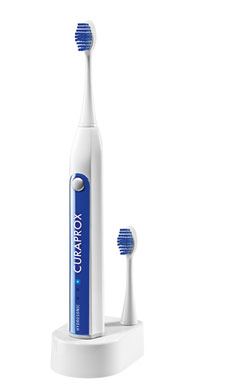
The electric toothbrushes on the market today are an excellent aid in oral hygiene. Though a perfect manual brushing technique is equal, many patients achieve better results with an electric brush. It can be particularly helpful to patients with lack of coordination, those physically challenged or handicapped. Sonic toothbrushes vibrate at high frequency and are able to disrupt dental plaque even out of the range of the bristles.
Though the brush movement happens automatically, you must take care to bring the brush head in intense contact with all teeth surfaces. Therefore a thorough cleaning performed with an electric brush takes more or less the same time as a manual procedure.
Toothpaste
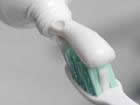
Toothpaste supports the mechanical cleaning effect of the toothbrush. Toothpaste abrasiveness should be moderate to give effective cleaning without causing mechanical damage to tooth tissue. Fluoride is a component of most types of toothpaste and has been proven to prevent tooth decay.
For small children, flavoured toothpastes containing less or no fluoride are available. Many special toothpastes on the market advertising “for sensitive teeth” or “whitens teeth” have a very limited, if any, effectiveness.
Brushing Technique
To be effective, cleansing of the teeth must be done regularly and systematically: after every main meal, if possible, and before bed. In order to ensure proper cleaning of all tooth surfaces, spend at least 3 minutes brushing.

The toothbrush should be placed at a 45° angle to the tooth.

With light pressure and vibratory or circular movements, the plaque will be removed from the gum line, followed by a wiping motion towards the chewing surface.

The same technique is used for posterior teeth.

For the incisor and canine teeth, the brush handle should be hold in a vertical position.

Vigorous scrubbing should only be done on the biting surfaces of the teeth.

Afterwards, run the tongue along the tooth surfaces to feel that all the plaque is removed.
This is of course only one of many recommended cleaning techniques. Each person develops his own individual method over time, only their efficiency is important. In case of doubt, have our dental hygienists instruct you in the appropriate technique.
Dental Water-Jet Appliances
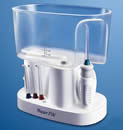
A water jet is not able to remove sticky bacterial plaque from the tooth surfaces and, therefore, cannot replace the toothbrush. However, it is useful in removing debris from areas difficult to access, for example, under bridges and around implants. It can also aid in cleaning periodontal pockets and patients in orthodontic treatment.
Dental Floss and Interdental Brushes
Since the toothbrush alone cannot properly clean interdental spaces, daily use of dental floss or interdental brushes is recommended. It is especially important for patients with periodontal disease or implants.
Our staff will thoroughly explain proper use of these tools.
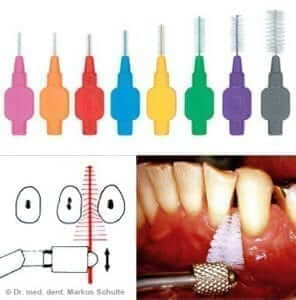
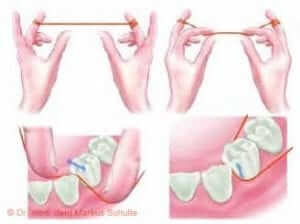
Tooth Sealing

Children and young adults are prone to cavities because of the natural shape of their teeth. When back teeth erupt, deep crevices called pits and fissures form on the chewing surfaces of these back teeth. Pits and fissures are so narrow that the bristles of a toothbrush cannot reach into them, making them difficult to clean; however, these crevices provide plenty of room for bacteria to grow and cause caries.
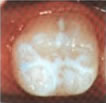
To prevent these cavities, a thin resin lacquer can be flowed into the fissures, creating a seal against bacteria.
Our paediatric dentist will decide, depending on the form, depth of fissures and caries risk of the patient, if tooth sealing is indicated.
